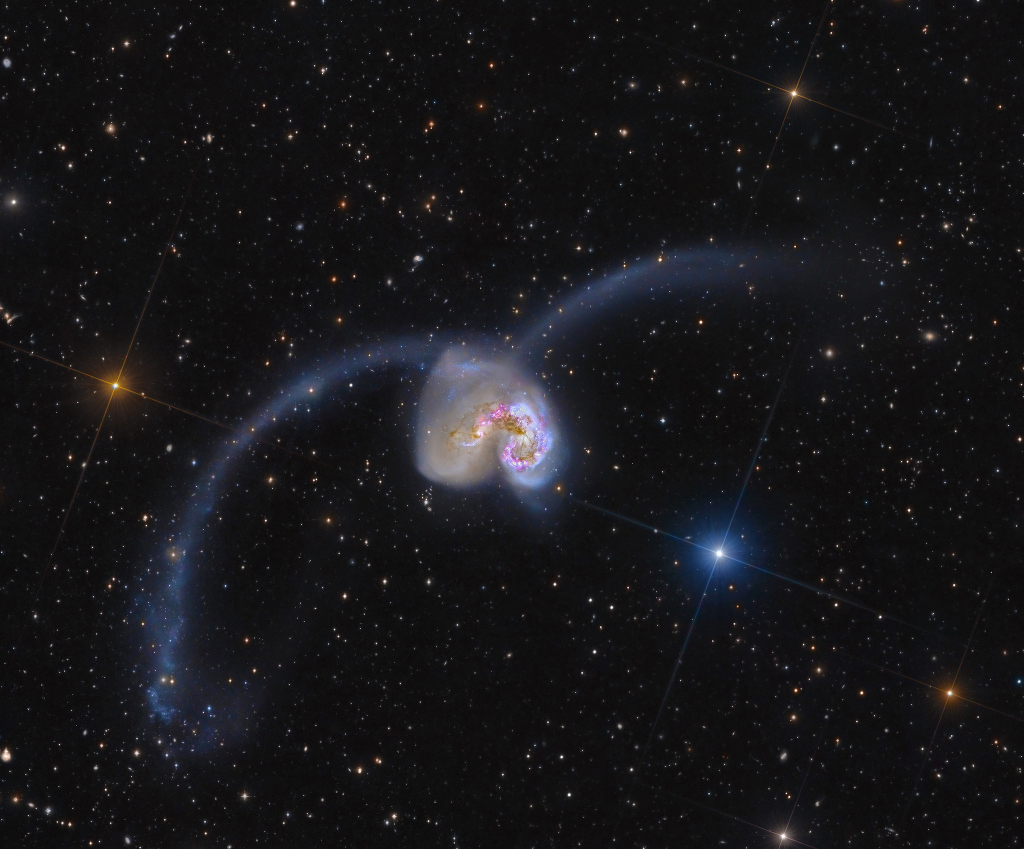 |
| Colliding galaxies NGC 4038 and 4039 image NASA/APOD |
The photo allows us to see cosmic event somse 60 million light years away in the direction of constellation Corvus. Should future astronomers take another photo in the year 5015 that is three thousand years in the future, it would look pretty much the same.
It is possible to simulate the formation and movements of colliding galaxies by writing pretty extensive computer code emulating forces of gravity and accumulation of mass in energy fields. Such simulations can then be run "in the normal speed of galaxies" instead of human experience of time measured in years. By accelerating the running of the collision simulation we can then observe in computer monitors dynamic changes caused by the cosmic accident instead of examining just a single static view, however gorgeous. The validity of the simulation code can be verified by studying other galactic crashes in the Universe showing them in different phases of the processes even each one of them we actually see only in slow motion, very slow to be more accurate.
Time is relative also to the observer. The light reaching us has travelled from the two galaxies about 60 million human years. Our timer clock uses the orbiting of Earth around Sun as basic measuring unit.
Galactic years are measured by the rotation of Milky Way around its center so that a given point, for example Sun, is back more or less where it started. This rotation has been estimated to take about 225-250 terrestrial years (wikipedia). In that time scale NGC 4038 and 4039 are at the distance of about four gyears from us. Even if the simulation runs in galactic years the collision would still be too very slow for us to follow visually as the movie would last for several years.
We live in relative time's extremely slow motion when set in the time scale of galactic years. But seeing things in that speed makes supercomputer simulated Cosmos a challenging and dynamic spectacle for laymen to admire and professionals to study in detail!
Future Milky Way Andromeda collision. Universe Sandbox
No comments:
Post a Comment